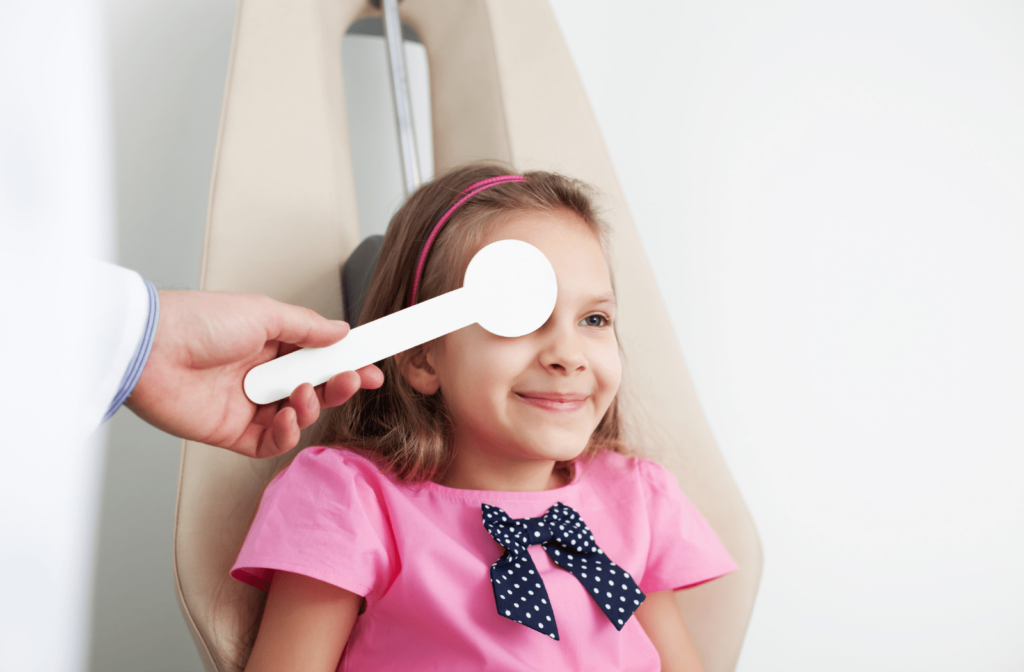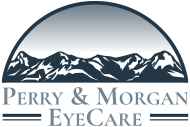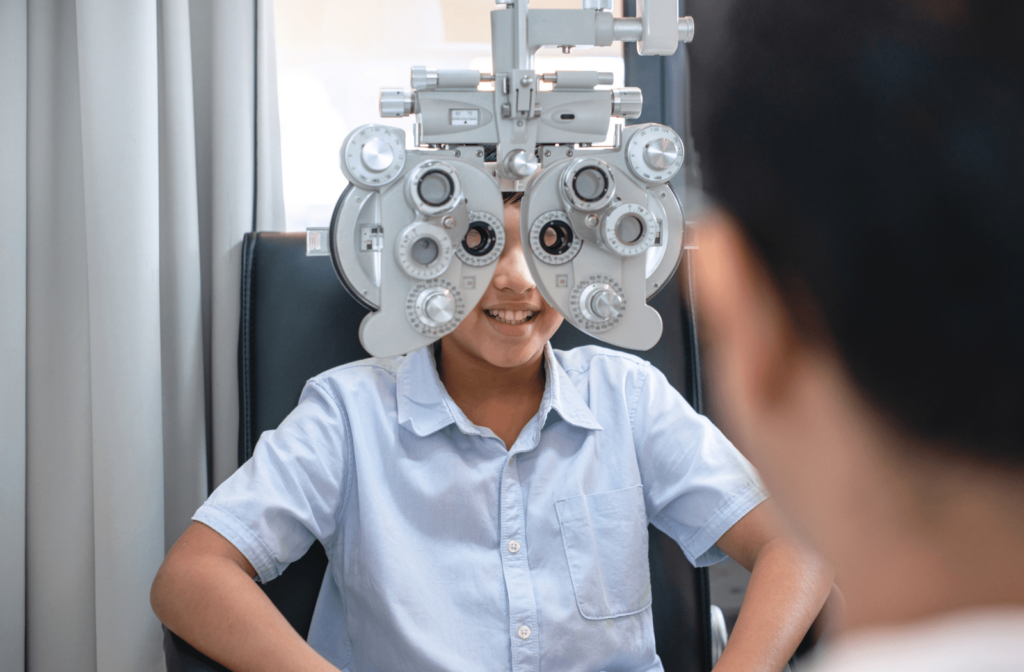Managing Your Child’s Visual Health
Eye care is more than vision, although your child’s visual health can influence lifelong success. Classroom learning is 80% visual, so protecting their eye health can significantly affect their academic performance and social skills.
Routine eye exams can help prepare your child for the future, whether they need eyeglasses to participate in activities or treatment for eye problems.
How often your child should get a comprehensive eye exam depends on age, health, and vision history.
Eye Exams By Age Group
The American Optometry Association (AOA) provides generalized recommendations for comprehensive eye exams by age:
- Infants (0–2)—at least one eye exam between 9–12 months
- Preschool (3–5)—at least one eye exam between 3–5
- School-age (6–17)—at least once before first grade, and yearly eye exams after
Comprehensive eye exams are a thorough evaluation of the visual system, from eye tissue health to visual abilities. While vision screenings can help determine some vision problems, the assessments are limited. Therefore, a comprehensive exam is still necessary even if your child receives a vision screening through their school.
Eye exams for school-age children can be similar to adult eye exams. However, infants and toddlers are still developing their vision. For example, hand-eye coordination and depth perception grow all through infancy, becoming well-developed between 1–2 years of age. Therefore, checking these skills can help determine how their visual skills develop or if they may benefit from exercises or treatment.
The evaluations and tests performed during your child’s eye exam will depend on multiple factors, including age group. Your child’s optometrist will also customize the process if your child has particular vision needs.
Children’s Vision Risk Factors
The AOA frequency guideline is based on the average visual development of the age group. Children who have a history of eye problems, complain about their vision, or have genetic risk factors may benefit from more frequent eye exams.
Being high-risk does not mean your child will develop the problem. Preventative care, including comprehensive eye exams, can help protect your child’s eye health or implement treatment as soon as possible to preserve their sight.
A child’s first eye exam can help determine their risk level. It’s also essential for creating a baseline, so their optometrist can watch how their vision and eyes change over time. Seeing their development gives their eye care provider more information about their health and vision.
Some risk factors for children’s eye problems include:
- Eye surgery or injury
- Health conditions or medication side effects
- History of vision or eye problems
- Poor academic performance
- Prematurity, low birth weight, or a difficult labor
- Infection during pregnancy
- Neurodevelopmental disorders
- Strabismus (crossed eyes)

Vision History
When your child has a history of previous vision or eye health problems, they have a higher risk of developing eye issues. Children can also inherit risk factors.
For example, children have a significant chance of developing myopia (nearsightedness) when one of their parents has the condition. Managing myopia in childhood can preserve vision and prevent related eye diseases, including cataracts, glaucoma, and myopic macular degeneration.
Multiple health conditions can also impact eye health and eyesight. For example, diabetes (type 1 and type 2) has inherited risk factors and can lead to diabetic eye disease when uncontrolled. Your optometrist can also detect health conditions during an eye exam, helping protect your child’s general health with preventative care.
Discussing your child’s vision history, from their family history to their personal experience, is a crucial part of every comprehensive eye exam.
Watching for Eye Problems
Children are learning a lot about the world, including how their vision works and feels. They may not know when they’re experiencing a vision problem or may not talk about it. Optometrists know the signs and symptoms. Eye exams are crucial for evaluating your child’s eye health and eyesight to determine their progress or if they need a helping hand.
While your optometrist can get an in-depth look during an eye exam, there are some signs and symptoms to help you recognize if your child has a vision problem:
- Avoiding visually-intensive activities (reading, computer work)
- Bumping into objects or excessively clumsiness
- Bringing objects or reading materials close to their face
- Complaints of dizziness, headaches, or nausea
- Complaints of blurry or double vision
- Eyes feeling itchy, dry, burning, or scratchy
- Crusty, swollen, or red-rimmed eyelids
- Frequent eye rubbing or squinting
- Closing or covering one eye
- Misaligned eyes (eye turn or crossed eyes)
- Redness or excessive watering
- Sensitivity to light or complaints of brightness
- Tilting or thrusting their head forward to see
Early Intervention
Conditions like: crossed eyes, amblyopia (lazy eye), or myopia (near-sightedness) can be significantly improved with early diagnosis and treatment. If there is a family history of eye problems, schedule your child for a comprehensive eye exam to rule-out any problems or to start treatment as needed.
Visit Us for Your Child’s Eye Exam
Whether your child’s ready for their first eye exam or their annual eye exam, we can help them feel comfortable. At Perry & Morgan EyeCare, we strive to provide quality care, so our patients see a bright future. We treat our patients like family and can’t wait to welcome your child to our practice.
Protect their future eye health by booking an appointment today!



